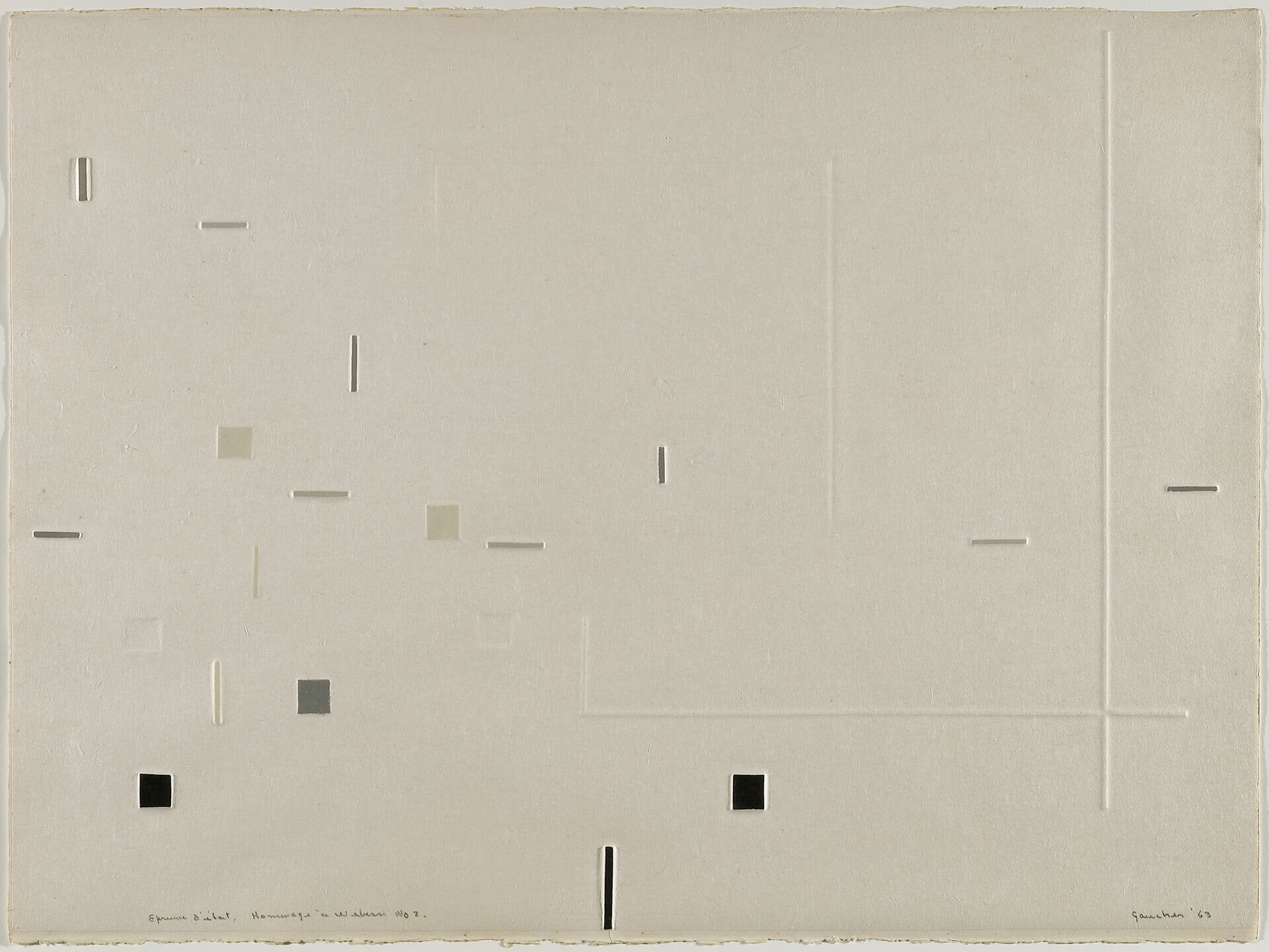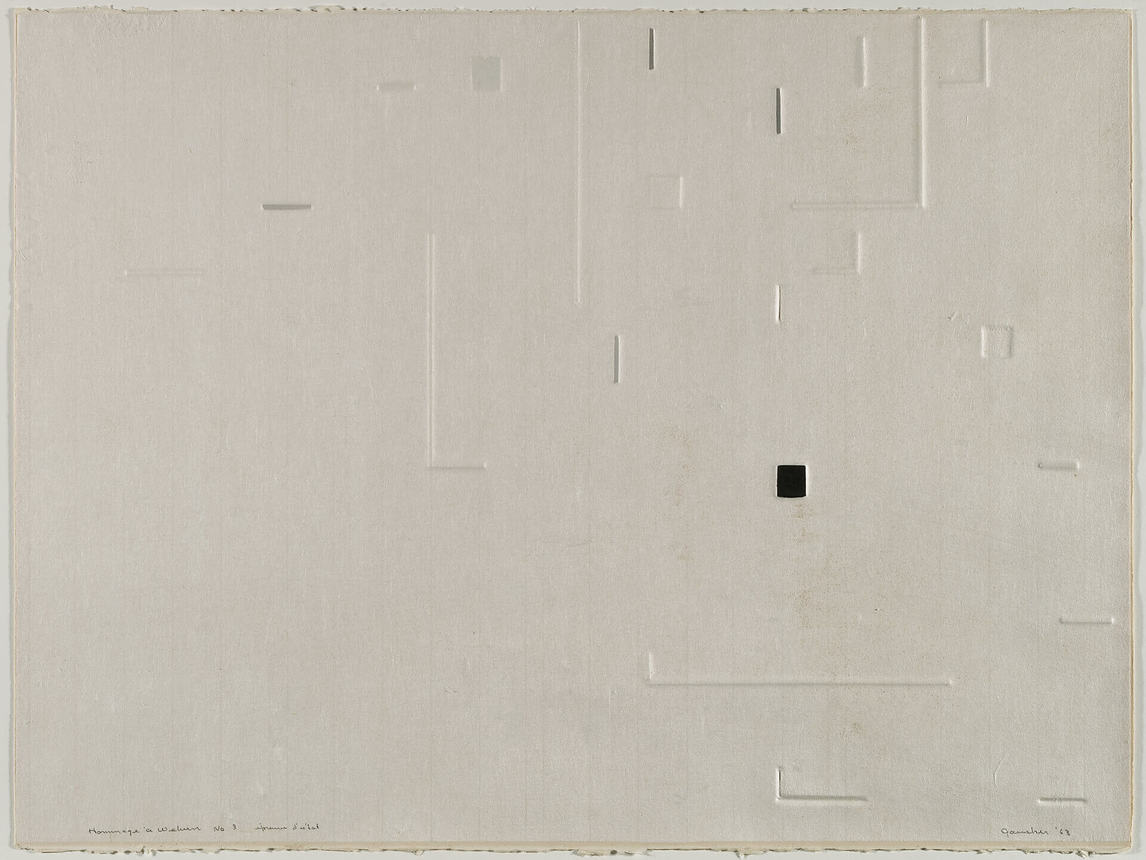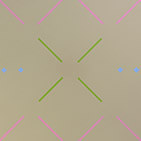In Homage to Webern No. 2 1963

Yves Gaucher, In Homage to Webern No. 2 (En hommage à Webern no. 2), 1963
Relief print in black and grey on laminated paper, 57 x 76.5 cm
National Gallery of Canada, Ottawa, © Estate of Yves Gaucher / SODRAC (2015)
In Homage to Webern Nos. 1, 2, and 3—a suite of three exactingly composed prints—constitutes a decisive break from Gaucher’s earlier work and contains the seeds of subsequent developments. The prints were crucial to Gaucher’s evolution into a Plasticien painter—or rather, to his birth as a post-Plasticien one—alongside Guido Molinari (1933–2004), Claude Tousignant (b. 1932), and Charles Gagnon (1934–2003).
Here he dispenses with the quasi-organic shapes seen in Asagao, 1961, transforming them into a system of pure notations: lines, squares, and dashes. Printed in positive or negative relief they are sometimes inkless, sometimes black and grey, loosely distributed but discernibly arranged according to a grid pattern. Gaucher would later call these visual cues “signals.” He selects and disperses them in the three prints as if he were performing a set of variations on a theme, moving from a relatively even distribution toward increasing asymmetry.


A crucial event for the production of the Webern prints was a concert of music by Pierre Boulez, Edgard Varèse, and Anton Webern that Gaucher attended during his first visit to Paris in 1962. The exposure to these radical new forms of classical music provoked an intense period of work during which he made some 1,500 drawings, most of which he destroyed, until he arrived at the dynamic formal solution of the Webern prints.
Anton Webern’s “cells of sound” found their visual equivalents in Gaucher’s signals. Their geometric interrelations encourage us to try to assemble them into a single unity, but in reality the eye gets bounced about, allowed to take momentary refuge in a succession of smaller clusters of coherent relationships, each of which quickly dissolves as the eye moves onward, discovering new but equally fragile orderings. A search for wholeness and resolution instead yields a continual flux; Gaucher incorporates sensations of time and duration as essential qualities of the viewing experience.

 About the Author
About the Author
 More Online Art Books
More Online Art Books
 Acknowledgements
Acknowledgements